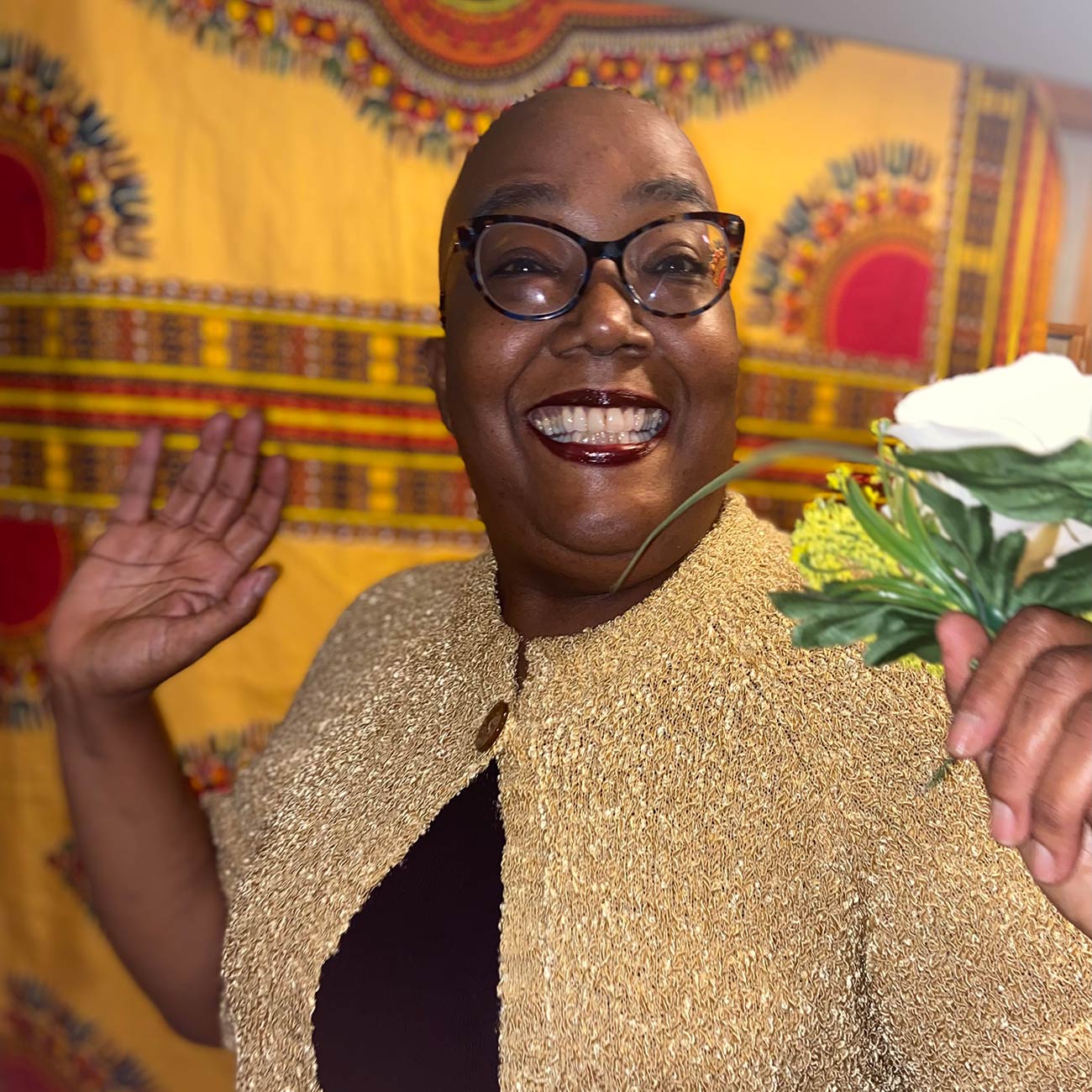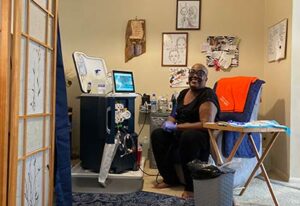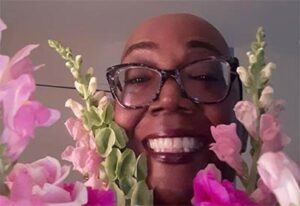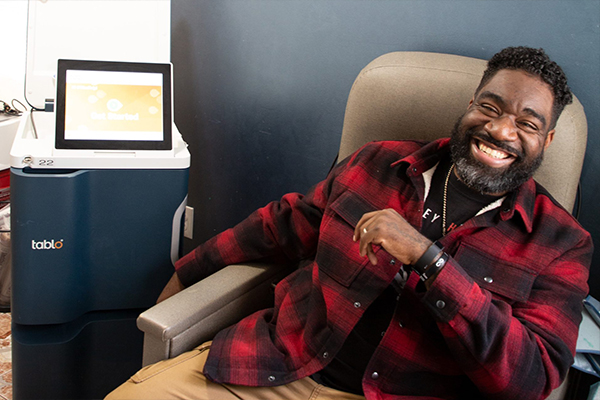Tracey: A Kidney Transplant Victory and a Purposeful Life

Summary
The first patient to go home with Tablo in 2020 celebrates her new kidney transplant, and offers advice to others navigating kidney disease about the importance of staying positive.
“Make the best lemonade out of the lemons you’ve been given.”
This quote perfectly reflects Tracey’s attitude and spirit, with a warm smile and laugh that give no indication that she has been living with kidney disease for the past 17 years. Now at home in New Jersey recovering after her second kidney transplant in late February, she is excited for the future. She holds the special distinction of being the very first patient to go home with the Tablo Hemodialysis System, that helped her to have a high quality of life while she waited for her transplant.
April is National Donate Life Month.
Read more here.
Tracey, who has three grown children, enjoys helping others as a director of her church’s food pantry and community services program, and as a kidney patient advocate. Prior to her transplant, she kept a busy schedule all while managing her own dialysis at home with Tablo.
She also wants to help build awareness that kidney donation and transplants are urgently needed.
“I want to share my experience and show other kidney patients that dialysis is not a death sentence. It’s another chance at life.”
“If you’re on the transplant waitlist, be patient and have faith. There is always a glimmer of light in a dark tunnel. Find peace in your adversity and focus on what you can do versus what you can’t do.”
Tracey has bravely battled many challenges with her kidney disease over the years—including kidney cancer, FSGS (focal segmental glomerulosclerosis), ESRD (end-stage renal disease; also known as end-stage kidney disease, or ESKD), bowel obstruction surgery, years of draining, negative in-center dialysis experiences, a brief and unsatisfactory stint on the NxStage dialysis system at home, innumerable hospital stays, and a live donor kidney transplant that lasted for seven years. Along with these challenges, 15 years ago she lost her husband of nearly 20 years in a tragic car accident.
“There have been times when I truly felt like my life was out of control. But I have a fighting attitude. I get back up after each challenge,” says Tracey. “The reason is that I had to be there for my kids.”

Tracey successfully managed her dialysis treatments at home with Tablo from July 2020 through February 2022. “I can honestly say it was a game changer and a blessing for me,” she says. “Tablo allowed me to live my life, do my volunteer work, work part-time and spend time with my family. All of this was out of the question when I was doing dialysis in-center and down for the count afterward, or with the NxStage device at home. During that time, dialysis was my part-time job. Due to the ease of use of my Tablo, that I affectionately named Tammie, I had my life back. I treated on my own schedule. I had energy and felt as good as when I didn’t do dialysis. I felt mentally and physically prepared for a transplant. Now I consider the fistula in my arm as my badge of courage.” (For more on Tracey’s kidney disease journey and Tablo experience, see this brief video.)
The Wait, and the Call
Tracey spent a year and seven months on the organ transplant wait list, with her wait time this second time around starting after she began home dialysis with Tablo. In early February, Tracey began getting calls from the transplant center at her hospital. They said she may be a potential match for a donor kidney, and she should get prepared to go to the hospital at short notice. She then found out she wasn’t a match for that specific kidney, and she was very disappointed. “But then I told myself, just be patient,” she says, with her ever-positive attitude.
On February 25, she received another series of calls from the hospital, telling her that an at-risk (also known as an Expanded Criteria Donor, or ECD) kidney had become available. They told her a few details about the deceased donor, including that the kidney was from a 54-year-old woman with diabetes who had just died from a stroke. (Tracey indicated when she signed up for the transplant waitlist that she would be open to considering an at-risk kidney. This donor type can become available more often, and the recipient can change their mind at any time about what type of donor they prefer.)
Tracey let the hospital know that she would be willing to move forward with the at-risk transplant, and they told her she was number 10 in line and to get prepared as it could happen soon. As of the second call, she was number 7, then by later that evening she was number 3 on the list. But, she didn’t want to get her hopes too high, as anything could happen and the patients ahead of her on the waitlist might qualify for the transplant.
Then, on February 26 at about 2 a.m., she got the call she had been waiting for: it was time to go to the hospital. “It felt surreal that it was actually happening,” she recalls.
Tracey arrived at the hospital at 4 a.m., and that morning she underwent the several-hour surgery to have a deceased donor kidney placed on the left side of her body. Her native kidney had previously been removed due to cancer, and her prior transplant had been on the right.
She spent five days in the hospital following surgery, with the new organ working well and slowly gaining function. Her creatinine level was 4.2 mg/dL in the hospital, decreasing to 2.5 as of two weeks post-surgery, and 1.9 at six weeks (normal range for women is generally from 0.6 to 1.1 mg/dL, but varies by age, health history and other factors). According to the National Kidney Foundation, a deceased donor kidney can take longer than a living donor kidney—two to four weeks or more—to start working. Some patients need dialysis during this period, but Tracey didn’t require it.
She also commented on the donor whose kidney was now working inside her body. “I’m truly grateful for this gift of a second chance at life, but it breaks my heart that she died,” says Tracey. “I plan on reaching out to her family through the organ donation network.”
As a side effect of the anti-rejection medications she is taking for her new kidney, Tracey developed new-onset diabetes after transplant (NODAT), and is insulin dependent and on a diabetes diet. This occurred briefly with her first transplant as well. Up to 25% of kidney recipients develop NODAT, according to recent data.
She offers advice for others on the transplant waitlist: “There’s hope in the wait. Listen to your body, take the time to learn about the kidney disease and other conditions that that you might have, the do’s and don’ts. Follow your doctor’s instructions and stay diligent about your COVID risk.”
A New Chapter

Tracey describes that it is surreal and refreshing to not do dialysis anymore, as it was such an important part of her life. “I wake up some mornings and it feels like a dream that I got a transplant. I take each day as it comes, go for walks, and listen to my body and rest as needed.”
For the first month after surgery, she had twice-weekly post-transplant appointments: one for blood work and the other with her transplant doctor to take measurements such as blood pressure and weight, assess her immunosuppressant medications, and discuss blood results and progress with her body accepting the new kidney. “I will do everything I have to do and take care of my health, in order to keep this kidney,” she says.
One of the first things that Tracey is excited to do following her recovery is go on a long-awaited trip to Egypt to see the Great Pyramids, with a lifelong friend. She also plans to go back to work full-time, and to be a patient advocate speaker for the kidney disease community, help raise awareness about organ donation and transplant, and educate the higher-risk African American community about learning their kidney numbers.
She also wants to encourage those with ESRD. “Speaking to those who think that their life is over because they have to go on dialysis, I’m here as living proof that there is life on dialysis. Get to know all your options and make the choice that is right for you and your family. When I look back at my journey, my positive experience with Tablo at home helped me to discover what I want to do with my life: help and inspire others. With my transplant, I feel even more empowered. As long as I have the energy to extend a hand and help somebody else, that is what I will do.”
Tracey’s List of Suggested Resources
United Network for Organ Sharing
Are You the 33%? 1-Minute Quiz to Assess Your Kidney Disease Risk
Organ Donation and African Americans
Tracey’s “Journey on Home Dialysis with Tablo” video
Tracey’s Facebook page
* Tablo Hemodialysis System Disclaimer:
Results may vary. Keep in mind that all treatment and outcome results are specific to the individual patient. Please consult your physician for a complete list of indications, warnings, precautions, adverse events, clinical results, and other important medical information. It is important that you discuss the potential risks, complications, and benefits of this product with your doctor prior to receiving treatment, and that you rely on your physician’s judgment. Only your doctor can determine whether you are a suitable candidate for this treatment.
* Kidney Transplant Disclaimer:
Transplant is not an option for everyone. Speak with your healthcare team to decide if transplant is an option for you.

